Formal Sathya Sai Education Programmes
Sathya Sai Ed. in Human Values (SSEHV)
in State and Private Schools
Sathya Sai Schools
Institutes of Sathya Sai Education (ISSEs)
Sathya Sai Colleges and Sri Sathya Sai University
Non-Formal Sathya Sai Education Programmes
Sai Spiritual Education (outside India)
Bal Vikas (in India)
Sathya Sai Education in Human Values
(SSEHV) in the Community
SSEHV for Teens and Young Adults
Sathya Sai Parenting
Informal Sathya Sai Education
Discourses by Sri Sathya Sai Baba
Sanathana Sarathi Magazine
Vahinis, by Sri Sathya Sai Baba
Conferences/Retreats (local, national,
international)
Study Circles in Sathya Sai Baba Centres
Radio Sai Global Harmony and
Information Websites
Sri Sathya Sai Education Programmes
References
An Overview of Sri Sathya Sai
Education System
From its early beginnings with the Bal Vikas programme in India in the late 1960s, Sathya Sai Education has grown into a comprehensive education system, practiced in all parts of the world and covers a wide range of formal, non-formal and informal education programmes, providing a life-long learning and transformation process.
Though originated in India, all these programmes have adapted themselves well to suit local cultural aspirations as well as jurisdictional requirements of national and local educational authorities in different countries. Despite this diversity, all Sathya Sai Education programmes maintain their coherence because all of them draw upon the philosophy of Educare and pedagogy of integral education which characterise Sathya Sai Education. Sathya Sai Education integrates the five teaching techniques with the full range of educational strategies used in formal and informal education programmes.
At the heart of the system of Sathya Sai Education is the teacher. Teachers of Sathya Sai Education, at all levels, are committed to living the values and to nurturing their development in the learner. A teacher of Sathya Sai Education teaches through love. It is through love that transformation ultimately takes place. When the process of Educare is uppermost in a teacher’s mind teaching and learning becomes experiential and joyful. The pedagogy of Sathya Sai Education enables the teacher to merge the purely secular with the spiritual. The five teaching techniques, focused on human values, when integrated with contemporary teaching strategies, touch the body, mind, and spirit of the learner. In this manner, any setting where Sathya Sai Education is taking place becomes a human values-based learning environment.
Broadly, Sathya Sai Education can be classified into the following categories:
Formal education, delivered by:
• Sathya Sai Schools
• SSEHV in state (government funded) and private schools
• SSEHV in Institutes of Sathya Sai Education (ISSEs)
• Sathya Sai Colleges Sri Sathya Sai University
Non-formal education, delivered by:
• Bal Vikas/Sai Spiritual Education
• SSEHV in the community
• SSEHV for Teen and Young Adults
• Sathya Sai Parenting programmes
Informal (continuing) education provided by:
• Discourses of Sri Sathya Sai Baba
• Sanathana Sarathi
• Vahini Series by Sri Sathya Sai Baba Sathya
• Sai Education Conferences (local, national, and international)
• Study Circles in Sri Sathya Sai Baba Centres
Radio Sai Global Harmony
Information Websites
Education must instill the fundamental human values. Education must promote ethical behaviour. It must foster self-control. This is the essential function of Education.
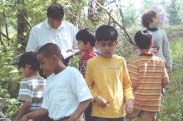
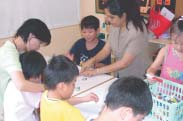
FORMAL SATHYA SAI EDUCATION PROGRAMMES
Formal education provides an opportunity to apply the principles of Sathya Sai Education in formal educational settings at the primary, secondary, and tertiary levels. The evidence reviewed in succeeding chapters indicates that Sathya Sai Education, when delivered within a regulated institutional environment, helps children to become responsible, attentive, respectful, and disciplined.
Sathya Sai Education in Human Values (SSEHV) in State and Private Schools
The positive experience with the spiritual education classes for children of Sai devotees led to the development of similar classes for children whose parents are not Sai devotees. The new programme would be similar to Bal Vikas, but the children would not be taught about Sri Sathya Sai Baba, or any particular spiritual figure. Rather, the five human values of Truth, Right Conduct, Peace, Love, and Nonviolence would constitute its primary focus. The name chosen for the new programme was Sathya Sai Education in Human Values.
The predominant aim of Sathya Sai Education in Human Values (SSEHV) is character development. Initially, the programme targeted children in public or private schools, and involved professional teachers who had received special training. Subsequently, interested individuals who were not professional teachers were permitted to receive the training. In a SSEHV programme children are taught respect for all faiths, as well as about the importance of placing a ceiling on their desires and rendering selfless service to others. Teacher training manuals,curriculums, and lesson plans have been developed around the world to meet the legal, cultural, and educational requirements of the different countries.
When SSEHV is introduced at a public or private school, school administrators retain control of the implementation of the programme. SSEHV teachers strive to reinforce the mission of the school. SSEHV trainers provide the training, educational resources, such as training manuals and a suggested methodology for an evaluation of the impact of the programme. The five teaching techniques are integrated with the standard instructional strategies of the school, as well as incorporated into lesson plans for direct lessons, through specific subject areas. In some countries SSEHV is incorporated through citizenship or civics education.
Sathya Sai Schools
Sri Sathya Sai Baba has inspired the establishment of schools that not only offer a traditional academic curriculum, but also provide spiritual education and promote character development. Known as Sathya Sai Schools, they are based on the philosophy of Educare and the pedagogy of integral education, and strive to offer free education in keeping with Sri Sathya Sai Baba’s dictum that education should be available to all, regardless of economic background.
Sathya Sai Schools are formal schools that operate within the legal, cultural, and educational framework of their respective countries of location. They are subject to government oversight, follow the official curriculum of local or national educational authorities, and prepare children for national examinations at different academic levels. The schools are non-denominational, with an open-door policy of admission and are usually located in disadvantaged areas of cities, towns, or rural areas so that they may provide quality education to children who would otherwise not receive it.
The over-arching goals of Sathya Sai Schools are:
- (a) to create an environment, culture, and ethos in which the five human values are actively practiced;
- (b) the realisation in students of the full potential of human excellence; and
- (c) to provide a model of educational excellence for other schools to emulate.
In pursuit of these goals, Sathya Sai Schools promote:
- (a) the teacher as exemplar;
- (b) the spiritual transformation of students and teachers;
- (c) academic excellence;
- (d) identification with and respect for one’s culture and nation,
- (e) appreciation of the unity of the different faiths, and
- (f) an active social conscience and an inclination to render selfless service to others.
A school should not be considered to be just a commonplace arrangement designed for teaching and learning. It is the place where the consciousness is aroused and illumined, purified and strengthened, the place where the seeds of discipline, duty and devotion are planted and fostered into fruition.
The broad objective of Sathya Sai Integral Education is that a student should have the benefit of a trained intellect as well as the constant light of an awakened intuition. In other words, he should have an integral education, combining the brilliance of reason with the quiet calm and depth of moral and spiritual education.
Institutes of Sathya Sai Education (ISSEs)
Institutes of Sathya Sai Education (ISSEs) have been established in many countries to support the goals and objectives of Sathya Sai Education through awareness raising, advocacy, research, and development. They act as centres of training for teachers and educationists in the principles of Sathya Sai Education. In addition, they ensure that teachers become active practitioners of the ideals of this programme and thereby help teachers to become instruments that help others unfold the divine qualities that reside within themselves.
The goals of an ISSE are to:
- (a) establish educational models of excellence for Sathya Sai Education in the form of SSEHV programmes in the community, state, and private schools, and in partnership with universities, ministries of education, and international organisations, such as the United Nations;
- (b) develop and implement SSEHV programmes;
- (c) ensure the standards and quality of Sathya Sai Schools and SSEHV programmes in state and private schools; and
- (d) carry out research and development related to its programmes.
The functions of an ISSE are to:
- • establish, manage, and supervise Sathya Sai Schools
- • monitor and evaluate standards and the performance of Sathya Sai Schools
- • plan and establish professional links with non-Sathya Sai Schools, teacher training colleges, universities, ministries of education, and international organisations
- • develop teacher manuals, training modules, and curriculums
- • conduct research and on-going self-evaluation of programmes, training, standards, and overall effectiveness
- • provide training in SSEHV for teachers, schools, ministries of education, international organisations, and other venues of professional development, such as medicine, health care, social service professions, and business in the form of professional development workshops and conferences, and diploma courses
- • provide support in the form of training and materials for the teachers of Sai Spiritual Education when requested by the Sri Sathya Sai Organisation
- • provide education in human values for parents and young adults.
There are three kinds of teachers: those who inform, those who explain, and those who inspire.
The teacher moulds the rising generation into self-confident, self-reliant, Atma-conscious persons. He is the architect of happy homes, prosperous communities and peaceful nations.
Sathya Sai Colleges and Sri Sathya Sai University
Sathya Sai Colleges are institutions for tertiary education but with a difference. They combine secular with spiritual education in a seamless manner, inculcating tyaga (sacrifice) and yoga (spiritual discipline) among the students. Sri Sathya Sai University based in Prasanthi Nilayam (Andhra Pradesh, India) has three affiliated colleges (two for boys and one for girls). The distinctive feature of this University, the founder and Chancellor of which is Sri Sathya Sai Baba, lies in the unique academic and living environment which is suffused with love and an emphasis on character development as much as on academic attainment. A fuller account of Sri Sathya Sai University is given in Chapter 5.
Sathya Sai Colleges affiliated with the University, as well as other Sathya Sai Colleges in India, serve as models of excellence for tertiary education.
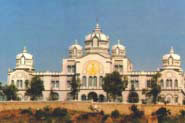

Planetarium, Sri Sathya Sai Univ.
NON-FORMAL SATHYA SAI EDUCATION PROGRAMMES
There are two non-formal structures of Sathya Sai Education: Bal Vikas (which is now known as ‘Sai Spiritual Education’ in countries outside of India) and Community SSEHV. These programmes complement and supplement the formal education that children receive from their regular school.
Sai Spiritual Education (outside of India) Bal Vikas (in India)
Sai Spiritual Education (SSE) is a unique programme of spiritual education for children of devotees of Sri Sathya Sai Baba. This same programme continues to be known as Bal Vikas in India. SSE classes are held in Sri Sathya Sai Baba Centres in 95 countries. Teacher manuals, curriculums, and lesson plans have been developed in many countries to meet various cultural needs.The children in SSE classes are placed in groups by age range: Group 1 children are generally between the ages of 6 and 9; Group 2 between 9 and 12 years of age; and Group 3 between 12 and 15 years. There is some flexibility in these groupings to accommodate local needs. Teachers receive training and on-going support primarily from the Education Wing of the Sri Sathya Sai Organisation in their country, and in some instances by an Institute of Sathya Sai Education.
The aims of SSE are to foster character development and spiritual transformation through helping children to: (1) practice placing a ceiling on their desires, (2) render selfless service to others, (3) appreciate the unity of the different faiths, and (4) learn about the life and teachings of Sri Sathya Sai Baba. The five human values are elicited through lessons based on the five teaching techniques: stories, songs, prayers or quotations, silent sitting/tuning-in, and group activities. Stories, songs, and prayers are selected from all countries, cultures, and faiths in order to foster awareness and appreciation of the unifying principles underlying all of the major religions. Stories of exemplars from society are given equal placement with the great prophets, as examples of ordinary human beings who have risen to the status of hero. Such examples inspire and encourage children to believe that they can aspire to similar heights. Through these lessons, the children learn about the importance of respecting their parents, properly discharging their duties at home, being loyal to and taking pride in their country, helping the less fortunate, and showing tolerance and respect for all religions.
Developments in the social sciences have not been able to curb significantly the expressions of hatred, anger, greed, jealousy, lust, and egoistic pride prevalent in society. Media glorification of criminal activity, self-destructive behaviours, domestic and other forms of violence is impacting negatively on the minds and attitudes of the young people all over the world. The SSE programmes seek to counter the effect of these unfortunate trends on the students.
Sathya Sai Education in Human Values (SSEHV) in the Community
Community SSEHV programmes designed for children of all faiths and backgrounds are conducted in schools, community centres, and other locations provided by host organisations. Community SSEHV classes may also accompany some of the medical camps conducted by the Service Wing of the Sri Sathya Sai Organisation.
The teachers receive training from Institutes of Sathya Sai Education (ISSEs) or from the Education Wing of the Sri Sathya Sai Organisation. SSEHV curriculums for the community and teacher training manuals have been developed in several countries. Moreover, the aims of Community SSEHV are the same as those of SSEHV in state and private schools.
SSEHV for Teens and Young Adults
Sathya Sai Education programmes for teens and young adults are increasing around the world. This group, of teens and young adults, is especially vulnerable to the negative influences of the environment. Hence, the aim of these programmes is to develop better problem-solving and leadership skills. Such classes utilise group activities, discussion, self-reflection, and selfless service, along with a focus on the five human values.
Sathya Sai Parenting
The main objective of a programme for parents (launched in Prasanthi Nilayam in November 1998) is to heighten awareness of the parents’ role as human values educationists. Parents are primarily responsible for imparting to their children a sense of personal worth and competence. They do this by nurturing the establishment of a well-constructed inner framework of human values. This aspect of parenting is intimately tied with meeting the spiritual needs of children. These programmes alert parents to the challenges that their children face due to the effect of the media and consumerism.
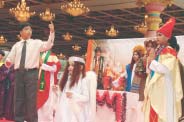
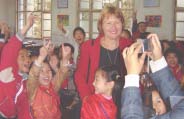
INFORMAL SATHYA SAI EDUCATION
Discourses by Sri Sathya Sai Baba
For more than 50 years, Sri Sathya Sai Baba has been giving discourses in Prasanthi Nilayam and in places that he visits. These discourses cover every aspect of spirituality and bring out the essence of the ancient scriptures of all religions. Many of his discourses dwell on the ideals of education, the shortcomings of the prevailing education system, and how these can be remedied by integral education that combines secular with spiritual education. The concept of Sathya Sai Education has emerged from and continues to be nourished by these discourses, which serve as a principal source of authentication for educationists the world over who practice Sathya Sai Education. They have been compiled by Sri Sathya Sai Books and Publications Trust (Prasanthi Nilayam) in 36 volumes to date, covering the period from 1953 to 2003.
Sanathana Sarathi Magazine
Sanathana Sarathi (The Eternal Charioteer), a monthly magazine, is published by the Sri Sathya Sai Books and Publications Trust in Prasanthi Nilayam, India. First published in 1958, the magazine is dedicated to the moral and spiritual upliftment of humanity through the five human values. Within the covers of this magazine are found Sri Sathya Sai Baba’s latest discourses and articles from eminent contributors, many of whom are educationists and scholars. The Vahinis — streams of sacredness — were serially published in this magazine as and when they emanated from the pen of Sri Sathya Sai Baba (see next section).
The magazine is published in English and Telugu from Prasanthi Nilayam and in other Indian languages from respective regions. Sanathana Sarathi is also translated in more than ten foreign languages, including German, Greek, Spanish, and Russian. Every year, Sanathana Sarathi comes out with a special issue in November commemorating Sri Sathya Sai Baba’s birthday. The magazine has a wide and ever-increasing circulation in India as well as in other countries, as the study of it brings the reader closer to the philosophy of Sri Sathya Sai Baba in simple understandable language.
Vahinis by Sri Sathya Sai Baba
Sathya Sai Vahinis were first published as a series of essays written by Sri Sathya Sai Baba in the monthly magazine "Sanathana Sarathi", comprising annotation and interpretation of the Upanishads and other holy scriptures and authentic explanations on spiritual principles. Later, these were compiled into sixteen separate titles published by Sri Sathya Sai Books and Publications Trust.
The principles of Sathya Sai Education were first enunciated by Sri Sathya Sai Baba in a comprehensive manner in a series of nineteen essays, first published in Sanathana Sarathi. These were later compiled in book form as "Vidya Vahini" (Stream of Thought Which Illumines) in 1954, elucidating the principles which could guide the rehabilitation of education as an effective instrument for establishing peace and freedom in society.
Conferences and Retreats (local, national, and international)
Conferences on Sathya Sai Education and related topics are held at the local and national levels, as well as in Prasanthi Nilayam. These are usually held over a three-day period.
Prominent scholars and educationists, including those from the various Sathya Sai Institutes and the Sri Sathya Sai University are invited to be speakers. These conferences focus on the philosophy and pedagogy of human values education, whether for children, young adults, or adults. Some are specifically arranged for physicians and other health-care workers, as well as individuals working in the field of information technology.The experience from these conferences, the publications released, and action plans developed are then disseminated to a much wider audience.
That which has no origin knows no beginning. It was before everything or anything was. There was nothing prior to It. For that very reason, It has no end. It expands as far as It wills, progresses as diverse as It feels, and through Its Fullness, It fills the Universe, too. Knowledge of this Supreme Principle is known as Vidya, Knowledge, Wisdom, Awareness.
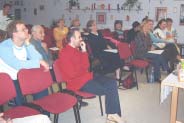
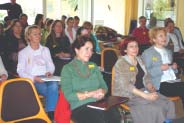
Study Circles in Sathya Sai Baba Centres
The vast numbers of families and individuals attending Sathya Sai Baba Centres in the more than 100 countries around the world receive informal instruction and support in the understanding and integration of human values in their daily lives through group study circles, workshops, and retreats. In these settings, the depth of meaning of the five human values and their application in life are considered.
Some of these study circles and workshops focus on the philosophy of Educare as it applies to parenting, the workplace, and professional situations. The Five Teaching Techniques are woven into the fabric of the devotional programme of Sri Sathya Sai Baba Centres through devotional singing, study circles, prayer, silent sitting, service activities, and stories about Sri Sathya Sai Baba and the great saints of all faiths.
A Study Circle does not mean only just reading and discussing and taking information into the head, but also putting into practice what is learnt… Knowledge about what this author says or that sage teaches is not what your Study Circle must aim to acquire. Not information, but transformation; not instruction, but construction should be the aim. Theoretical knowledge is a burden, unless it is practiced, when it can be lightened into Wisdom, and assimilated into daily life. Knowledge that does not give harmony and wholeness to the process of living is not worth acquiring. Every activity must be rendered valid and worthwhile by its contribution to the discovery of Truth, both of the Self and of Nature.
Radio Sai Global Harmony and Information Websites
Radio Sai Global Harmony and Information Websites, such as Heart2Heart, provide 24 hours of satellite streaming radio, TV, and Internet programmes. It is a vast information technology network of Websites providing electronic support for all Sathya Sai devotional, educational, and service activities around the world. In its unique way, Radio Sai Global Harmony includes all of the five teaching techniques, as a means of communicating not only information and knowledge, but touching the heart as well. It does this by linking and Web-streaming listeners to inspirational quotations (Sai Inspires), stories (Heart to Heart), the teachings and discourses of Sri Sathya Sai Baba, devotional music, as well as the world religions and series of talks by interviews with international experts. Radio Sai eminent scholars on the major texts and Global Harmony has expanded its outreach to literature of the world religions. In the near future, Radio Sai Global Harmony is expected to engage educationists worldwide, as well as those in Sathya Sai Education. Some to begin streaming lesson plans to Sathya Sai resources provided include in-depth articles on Schools and SSE classes.
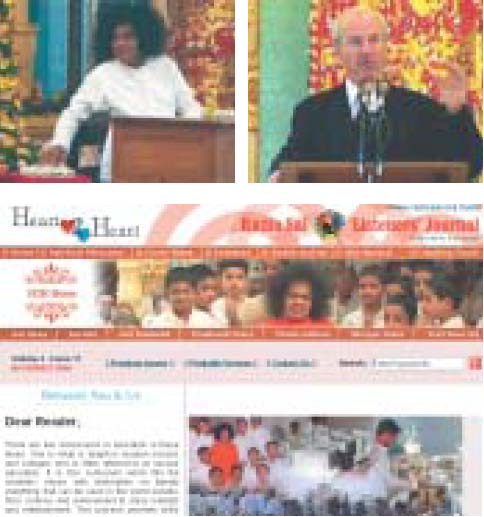
Sri Sathya Sai Education Programmes
Programme SSE SSEHV Sathya Sai Schools
| Intended audience | Sai devotee children |
General population |
Community children | |
|---|---|---|---|---|
| Delivered in | Sathya Sai Centres |
After school, in school, community |
School buildings |
|
| Countries reached | 90+ |
50+ |
India + 26 |
|
| Children taught (estimated) | 300,000 |
100,000 |
20,000+ |
|
| Life/teachings of Sri Sathya Sai Baba | ✓ |
|||
| Educare philosophy | ✓ |
✓ |
✓ |
|
| Teacher as exemplar | ✓ |
✓ |
✓ |
|
| Fosters five values | ✓ |
✓ |
✓ |
|
| Five teaching methods | ✓ |
✓ |
✓ |
|
| Unity/respect of religions | ✓ |
✓ |
✓ |
|
| Adjusted to local culture | ✓ |
✓ |
✓ |
|
Traditional school curriculum taught ✓
References
Burrows, L., (1998), Discovering the Heart of Teaching, Institute of Sathya Sai Education, Bangkok,Thailand.
Gardner, H., (1999), Intelligence Reframed, Multiple Intelligence for the 21st century, Base Books, New York, USA.
Institute of Sathya Sai Education – Mumbai, (2005), Towards Human Excellence: Sri Sathya Sai Education for Schools: Book 1: An Insight into Sathya Sai Education, Institute of Sathya Sai Education, Mumbai, India.
Zohar, D., and Marshall, I., (2000), (paper edition 2001), Spiritual Intelligence the Ultimate Intelligence, Bloomsburg Publishing, New York, USA.
An Overview of the Sathya Sai Education System

• Sathya Sai Schools • Sathya Sai Colleges • Sri Sathya Sai • SSEHV in Institutes • Sri Sathya Sai Inter- |
• Bal Vikas/Sai • SSEHV in State & • SSEHV in the community • SSEHV for Teens & • Sathya Sai Parenting |
• Discourses of Sri Sathya • Sanathana Sarathi • Vahini Series by Sri • Sathya Sai Education • Study Circles in Sri |
• Information Websites: • Radio Sai Global Harmony (www.radiosai.org/) |